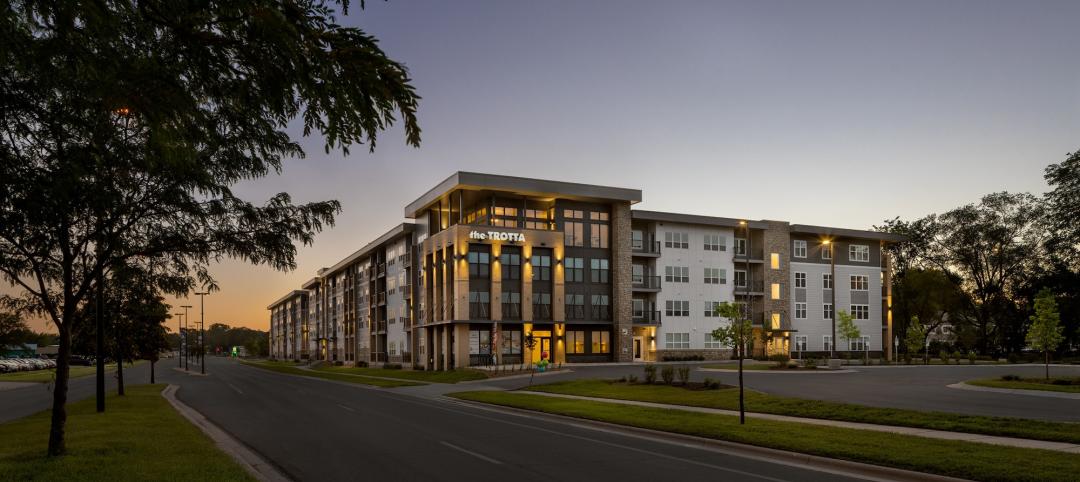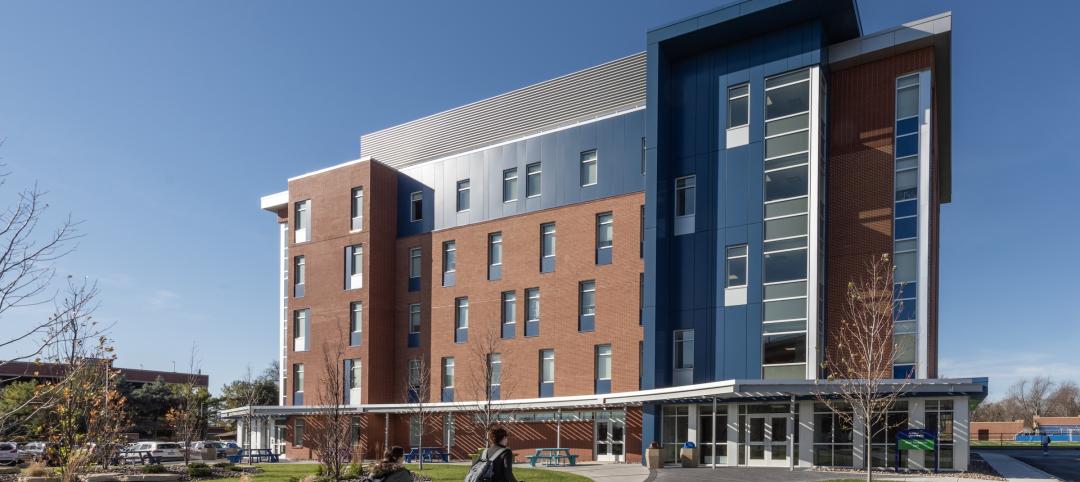Like the familiar adage, “Which came first, the chicken or the egg?,” every building project starts with the same conundrum: Should the client and its design team establish a budget and design a building which meets that budget, or should the team design a project and hope that it fits the budget which the client has set aside for the project
The simple truth is that the concept for every building, and its corresponding program, predates the expense for that building. And if an owner didn’t need the building, there would be no design and there would be no cost. But it’s also true that, as soon as an owner decides to embark on a project, it’s critical to establish the financial benchmarks to verify the viability of the endeavor.
But, for a number of reasons, things don’t always go as planned. One reason is that owners don’t always communicate clearly with their design teams at the outset of projects. For example, several years ago, we were on a design team that presented a concept design to a nonprofit institution for its new building. After weeks of design work, including a pricing exercise, the administrators told us that the project cost was significantly higher than they could afford. They probably had a number in their heads all along, but they had not shared it with the design team in advance. To reduce the cost, the staff had to reprogram the building and the architects had to redesign it.
Obviously, it’s much better if all stakeholders agree to certain parameters before starting any work, especially when a budget is firm. So even if your client does not share its budget with the design team early in the process, don’t assume there is no cap on the cost.
Cost estimates from a napkin sketch?
Even though it’s necessary to produce estimates during the early planning and master planning phases of projects, that process can be tricky, especially if the design team has little information to go on. In extreme cases, clients have asked us to provide estimates based on no more than just napkin sketches. In those cases, all the design team and owner can do is discuss the high-level cost drivers because you can’t do quantity take-off of materials at that point in the project. Such exercises are not always clear or beneficial for the client or the team.
Still, even preliminary estimates based on known parameters can still be useful to demonstrate the implications and challenges of implementing broad conceptual ideas. On one occasion, while we were working on a master planning exercise, the designers produced several schemes in order to pinpoint a potential range of costs. It became apparent that the owner was looking to bracket the highest and lowest costs related to different scopes of work. We quickly provided a throughline of financial understanding for these scopes and costs. It didn’t even require an extensive process.
As this last example illustrates, there’s usually a bit of give and take on cost, even though the client and design team might have to make some compromises. Currently, we’re assisting on a master plan for a county agency. In order to build consensus for a plan that meets the county’s budget, the design team is spending a lot of time determining what the stakeholders want.
For the purposes of identifying the cost, and because there are limitations on the budget, we’re honing into what they need as opposed to what they want to have. It’s good to know the cost implications of these two choices because they’re probably not the same.
We find that it’s even more critical to engage in a meaningful dialogue with the owner and consultant team in cases like this when the outlines of a project are still a little blurry around the edges. In fact, the less established criteria that’s available, the more important it is for the design team to ask the right questions of the owner and listen closely. As we gain a better understanding of the essential program needs, we can benchmark the budget earlier and more accurately.
Providing a high-level understanding of the costs required to meet basic programmatic needs does not need to be an exhaustive exercise. It’s critical to any project, with the exception of those rare owners who can afford not to know–if there really is such a thing. Rather, as a DLR Group colleague once expressed to me, the “form follows funding” approach is the reality for most, particularly institutional and public-sector clients. For our part, we enlist many strategies: published resources; our own 20-year historic database; and our teams’ insight and experience that allows our group to accurately predict costs.
That being said, it’s a bit of a misnomer to answer our original question about which comes first. Designing and budgeting are iterative, interconnected processes that should unfold in tandem as early as possible. As our clients will attest, we believe and enjoy establishing a system of frequent and effective communications throughout the project so that the design team and the owner will be aligned all the way through for success.
About the Author
Victoria Cabanos, Founding and Managing Principal of the Stuart-Lynn Company, is a trained architect and construction professional with over twenty five years of experience in the construction industry. She has worked on a variety of project types in a diversity of roles, including project architect, production engineer, construction supervisor and project manager. With an extensive knowledge of materials and methods and an integrated understanding of the entire construction process she has successfully demonstrated a skill set which includes designing, directing, budgeting, scheduling, resource management and vendor contract negotiations within aspects of the construction industry. She has managed numerous complex project teams, and has brought essential quality management services to the work, while keeping it firmly on budget and schedule. Her in-depth understanding of and familiarity with all aspects of construction afford her an overview of the work that allows for the best determination of priorities. She has also provided valuable insight for lease negotiation and contract development early on in the design process, and has ensured that the most qualified selection of contractors has been reviewed and evaluated for competency and compatibility. Victoria is also an accomplished professional woodworker and the managing partner in her own woodworking firm.
Related Stories
Roofing | Jan 8, 2024
Researchers devise adaptive roof tile concept that adjusts to ambient temperatures
Scientists at the University of California Santa Barbara published a paper that proposes adaptive roof tile technology that can adjust to ambient temperatures. Using a wax motor, tiles could switch from a heating or cooling state enabling savings on heating and cooling costs.
MFPRO+ Special Reports | Jan 4, 2024
Top 10 trends in multifamily rental housing
Demographic and economic shifts, along with work and lifestyle changes, have made apartment living preferable for a wider range of buyers and renters. These top 10 trends in multifamily housing come from BD+C's 2023 Multifamily Annual Report.
Giants 400 | Jan 2, 2024
Top 80 Hotel Construction Firms for 2023
Suffolk Construction, STO Building Group, PCL Construction Enterprises, AECOM, and Brasfield & Gorrie top BD+C's ranking of the nation's largest hotel and resort general contractors and construction management (CM) firms for 2023, as reported in Building Design+Construction's 2023 Giants 400 Report.
MFPRO+ News | Jan 2, 2024
New York City will slash regulations on housing projects
New York City Mayor Eric Adams is expected to cut red tape to make it easier and less costly to build housing projects in the city. Adams would exempt projects with fewer than 175 units in low-density residential areas and those with fewer than 250 units in commercial, manufacturing, and medium- and high-density residential areas from environmental review.
Contractors | Dec 22, 2023
DBIA releases two free DEI resources for AEC firms
The Design-Build Institute of America (DBIA) has released two new resources offering guidance and provisions on diversity, equity, and inclusion (DEI) on design-build projects.
MFPRO+ News | Dec 22, 2023
Document offers guidance on heat pump deployment for multifamily housing
ICAST (International Center for Appropriate and Sustainable Technology) has released a resource guide to help multifamily owners and managers, policymakers, utilities, energy efficiency program implementers, and others advance the deployment of VHE heat pump HVAC and water heaters in multifamily housing.
Sustainability | Dec 22, 2023
WSP unveils scenario-planning online game
WSP has released a scenario-planning online game to help organizations achieve sustainable development goals while expanding awareness about climate change.
Giants 400 | Dec 20, 2023
Top 100 Apartment and Condominium Construction Firms for 2023
Clark Group, Suffolk Construction, Summit Contracting Group, and McShane Companies top BD+C's ranking of the nation's largest apartment building and condominium general contractors and construction management (CM) firms for 2023, as reported in Building Design+Construction's 2023 Giants 400 Report.
Giants 400 | Dec 20, 2023
Top 40 Student Housing Construction Firms for 2023
Findorff, Juneau Construction, JE Dunn Construction, and Weitz Company top BD+C's ranking of the nation's largest student housing facility general contractors and construction management (CM) firms for 2023, as reported in Building Design+Construction's 2023 Giants 400 Report.
Healthcare Facilities | Dec 19, 2023
A new hospital in Duluth, Minn., is now the region’s largest healthcare facility
In Duluth, Minn., the new St. Mary’s Medical Center, designed by EwingCole, is now the largest healthcare facility in the region. The hospital consolidates Essentia Health’s healthcare services under one roof. At about 1 million sf spanning two city blocks, St. Mary’s overlooks Lake Superior, providing views on almost every floor of the world’s largest freshwater lake.

















